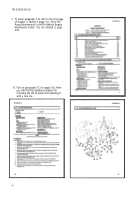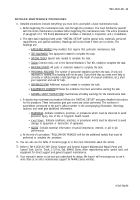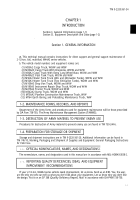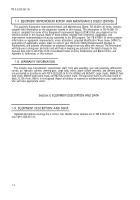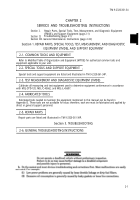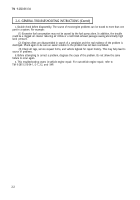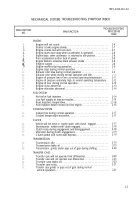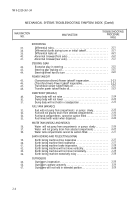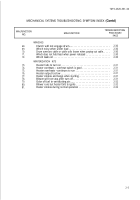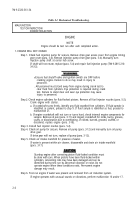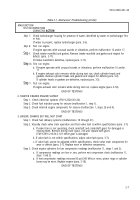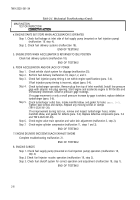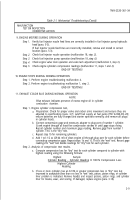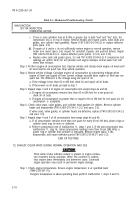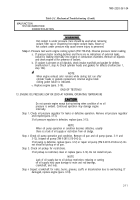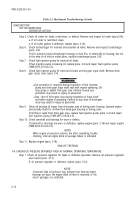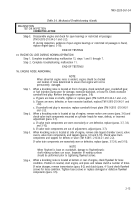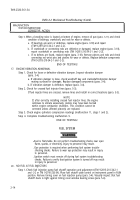TM-9-2320-361-34 - Page 21 of 764
TM 9-2320-361-34
Table 2-l. Mechanical Troubleshooting.
MALFUNCTION
TEST OR lNSPECTlON
CORRECTIVE ACTION
ENGINE
NOTE
Engine should be test run after each completed action.
1.
ENGINE WILL NOT CRANK
Step 1. Check fuel injection pump for seizure. Remove drive gear access cover from engine timing
gear cover (para. 5-4). Remove injection pump drive gear (para. 5-4). Manually turn
injection pump shaft at center hub screw.
If shaft will not rotate, replace (para. 5-4) and repair fuel injection pump (TM 9-2815-210-
34-2-2).
●
Ensure fuel shutoff valve and ignition switch are OFF before
cranking engine. Failure to do so may result in injury to
personnel.
. All personnel must stand away from engine during crank test to
clear fluid from cylinders. Eye protection is required during crank
test. Failure to stand clear and wear eye protection may cause
injury to personnel.
Step
2.
Check engine cylinders for fluid-locked pistons. Remove all fuel injector nozzles (para. 5-2).
Crank engine with starter.
a. If crankshaft turns freely, identify any fluid expelled from cylinders. If fluid sample is
identified as coolant, proceed to step 9. If fluid sample is identified as fuel, proceed to
malfunction 21.
b. If engine crankshaft will not turn or turns hard, check internal engine components for
seizure. Remove oil pan (para. 3-11) and inspect crankshaft for nicks, burns, grooves,
scuffs, or discoloration due to overheating. If nicked, burned, grooved, scuffed, or
discolored, replace engine (para. 3-18).
Step 3. Install fuel injector nozzles (para. 5-2).
Step 4. Check oil pump for seizure. Remove oil pump (para. 3-12) and manually turn oil pump
drive gear.
If drive gear will not turn, replace oil pump (para. 3-12).
Step 5. Check air intake manifold for presence of water.
If water is present within air cleaner, disassemble and drain air intake manifold
(para. 3-17).
CAUTION
Starting engine after correcting piston fluid-locked condition must
be done with care. When pistons have been fluid-locked within
cylinders, connecting rods may have been damaged and can be
identified during test run by abnormal vibration or noise. Do not
operate engine when these conditions exist. Permanent engine
damage may result.
Step 6. Test run engine if water was present and removed from air induction system.
If engine operates with unusual sounds or vibrations, perform malfunction 16 and/or 17.
2-6
Back to Top

